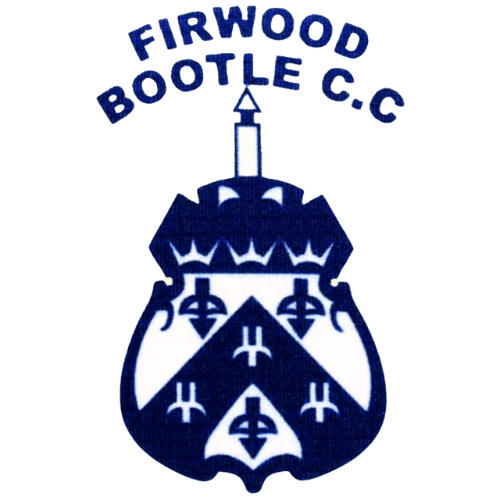SAFEGUARING CONCERNS
Firwood Bootle Cricket Club is firmly committed to providing an environment that is safe and welcoming for children (under 18) to enjoy the game.
Creating a culture where their views are asked for, as well as being able to offer their own opinions, helps develop an environment where children feel able to share concerns and everyone can challenge poor practice or behaviour.
It is the responsibility of statutory agencies in child protection to determine whether abuse has taken place, but it is everyone’s responsibility within the Firwood Bootle Cricket Club to report concerns. All suspicions and allegations of abuse will be taken seriously and responded to swiftly and appropriately.
Where Firwood Bootle Cricket Club works in partnership with other service providers, their safeguarding policies should, as a minimum, comply with this policy and the associated policies and procedures. We recognise and support the statutory responsibilities of Safeguarding and Specialist Services to ensure the welfare of children, young people and vulnerable adults and are committed to complying with the relevant Sefton Local Safeguarding Children Board policy and procedures.
ALL Individuals working with children, young people and vulnerable adults will be made aware of good practice in order to ensure that they are not placed in situations where allegations could be made.
Working in partnership with parents/carers is essential for the protection of children, young people and vulnerable adults.
We will ensure that the appropriate background checks are carried out for ALL staff and volunteers involved in working with children, young people and vulnerable adults
ALL staff and volunteers working directly with children, young people and vulnerable adults will be required to complete an appropriately identified level of safeguarding training. ALL staff and volunteers will be required to undertake refresher training every 3 years, except those who are Designated Safeguarding Leads for the NCS programme, who must undertake refresher training every 2 years.
The following records will be stored centrally:
All employees
Volunteers
Coaches
Senior Players
Junior players
Safeguarding Log
Behaviour Log
Accident Log
Registers of attendance for all age groups for Fire safety and Safeguarding purposes
There is a SafeHands ECB DBS list which can be downloaded from the STACK APP:
These records will be stored electronically and only accessible to those in the correct positions within the club through password protection.
Child abuse happens when someone harms a child. It can be physical, sexual or emotional, or involve neglect. Children who experience abuse may struggle to speak out, so its vital that anyone working with children or young people is able to recognise the signs of abuse
There are 4 types of abuse:
Neglect – where adults fail to meet a child’s basic physical and/or psychological needs, it is likely to result in the serious impairment of the child’s health or development (e.g. failure to provide adequate food, shelter and clothing, failing to protect a child from physical harm or danger, or the failure to ensure access to appropriate medical care or treatment.) It may also include refusal to give children love, affection and attention. Neglect in sport could include a teacher or coach not ensuring children were safe, exposing them to undue cold, heat or to unnecessary risk of injury.
Physical abuse – where adults and or other young people physically hurt or injure children by hitting, shaking, throwing, poisoning, burning, biting, or scalding, suffocating, drowning or otherwise causing physical harm to a child. Physical harm may also be caused when a parent or carer feigns the symptoms of, or deliberately causes ill health to a child whom they are looking after e.g. factitious illness by proxy or Munchausen’s syndrome by proxy. Examples of physical abuse in sport may be when the nature and intensity of training and competition exceeds the capacity of the child’s immature and growing body; where drugs are used to enhance performance or delay puberty.
Sexual abuse – where girls and boys are abused by adults (both male and female) and or other young people who use children to meet their own sexual needs. This could include full sexual intercourse, masturbation, oral sex, anal intercourse and fondling. Showing children pornographic material (books, videos, pictures) is also a form of sexual abuse. In sport, coaching techniques that involve physical contact with children could potentially create situations where sexual abuse may go unnoticed. The power of the coach over young performers, if misused, may also lead to abusive situations developing.
Emotional abuse – is the persistent emotional ill treatment of a child such as to cause severe and persistent adverse effects on the child’s emotional development. It may involve conveying to children that they are worthless or unloved, inadequate, or valued only insofar as they meet the needs of another person. It may feature age or developmentally inappropriate expectations being imposed on children. It may involve causing children to feel frightened or in danger by being constantly shouted at, threatened or taunted which may make the child very nervous and withdrawn. Some level of emotional abuse is involved in all types of ill treatment of a child. Emotional abuse in sport may occur if children are subjected to constant criticism, name-calling, sarcasm, bullying or unrealistic pressure to perform to high expectations consistently.
Within each of these areas, there are many different strands such as Child Sexual Exploitation, Peer on Peer Abuse, Witch Craft amongst many other areas of concern.
General signs of abuse
Children experiencing abuse often experience more than one type of abuse over a period of time. Children who experience abuse may be afraid to tell anybody about the abuse. They may struggle with feelings of guilt, shame or confusion – particularly if the abuser is a parent, caregiver or other close family member or friend. Many of the signs that a child is being abused are the same regardless of the type of abuse. Anyone working with children or young people needs to be able to recognise the signs.
These include a child:
- being afraid of particular places or making excuses to avoid particular people
- knowing about or being involved in ‘adult issues’ which are inappropriate for their age or stage of development, for example alcohol, drugs and/or sexual behaviour
- having angry outbursts or behaving aggressively towards others
- becoming withdrawn or appearing anxious, clingy or depressed
- self-harming or having thoughts about suicide
- showing changes in eating habits or developing eating disorders
- regularly experiencing nightmares or sleep problems
- regularly wetting the bed or soiling their clothes
- running away or regularly going missing from home or care
- not receiving adequate medical attention after injuries.
- Injuries, bruising, burns or scalds
- hungry, dirty, not attending school, inappropriate clothing in poor weather conditions
The above list of possible signs can interlink across the types of abuse but it is our role to identify when children’s behaviours, appearance or attitudes change.
These signs do not necessarily mean that a child is being abused and this list is not exhaustive. There may well be other reasons for changes in a child’s behaviour such as a bereavement or relationship problems between parents or carers. If you have any concerns about a child’s wellbeing, you should report them following our safeguarding and child protection procedures.
For further information about safeguarding and child protection please see the following websites:
English Cricket Board https://www.ecb.co.uk/about/policies/safeguarding/share-a-concern
https://learning.nspcc.org.uk/research-resources/briefings/definitions-signs-child-abuse
https://seftonscp.org.uk/scp
https://seftonscp.org.uk/p/worried-about-a-child
SAFEGUARDING CONTACTS







ECB safeguarding Team: safeguarding@cricketregulator.co.uk
